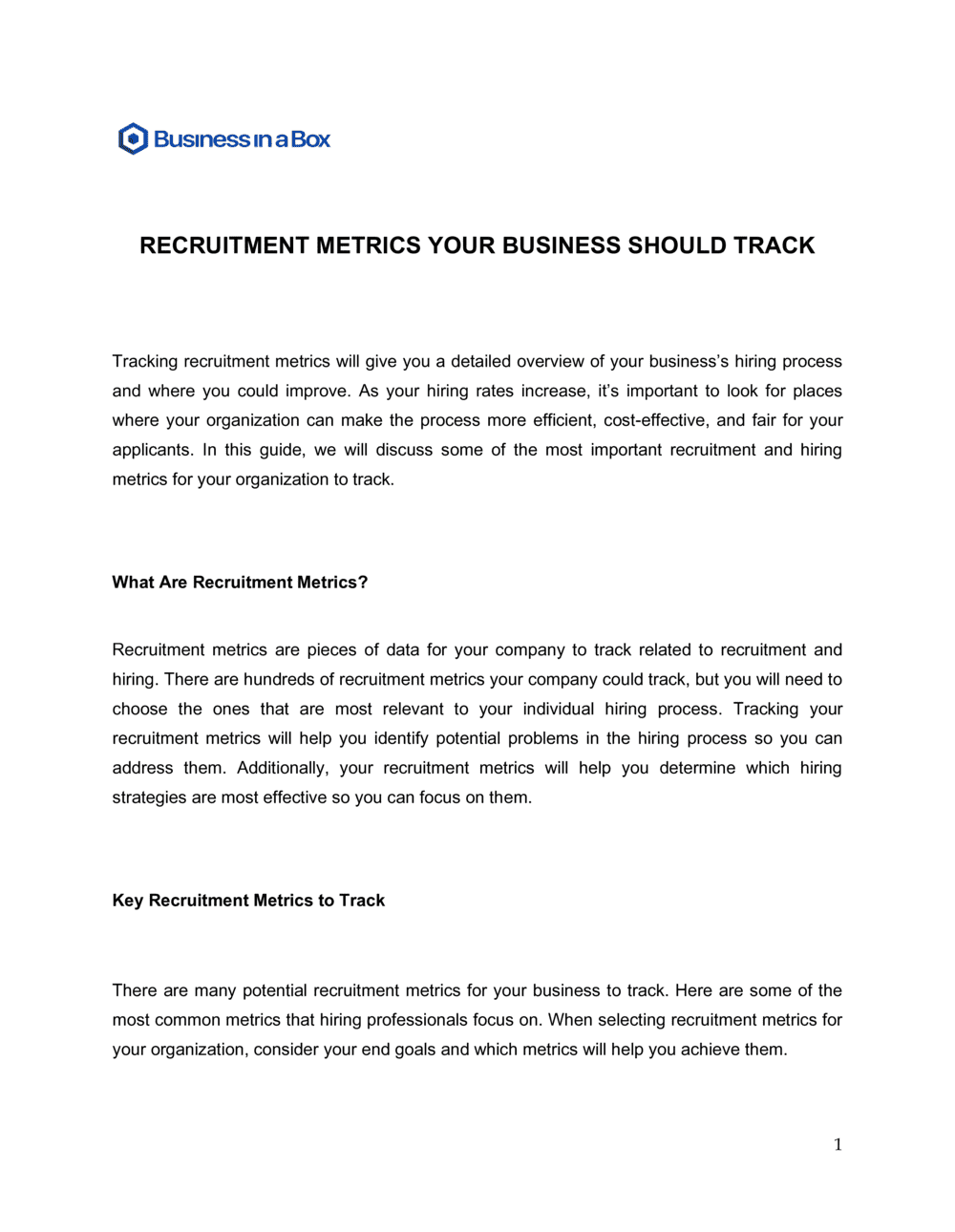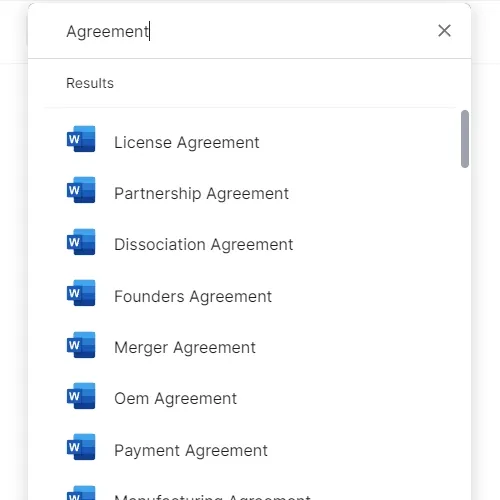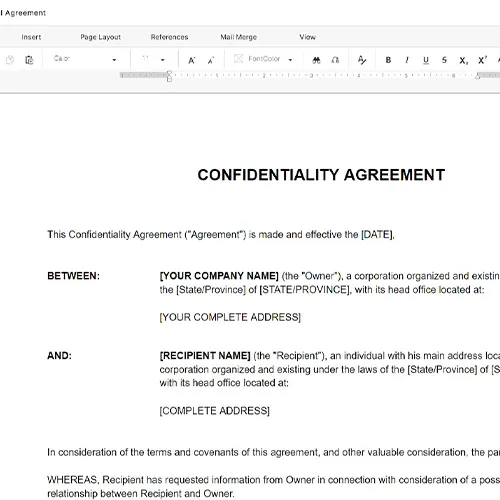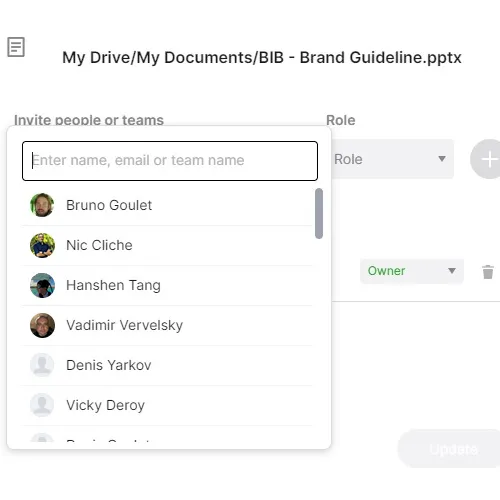Recruitment Metrics Your Business Should Track Template

Sample of Document Content
This recruitment metrics your business should track template has 3 pages and is a MS Word file type listed under our business plan kit documents.
Recruitment metrics your business should track template
RECRUITMENT METRICS YOUR BUSINESS SHOULD TRACK Tracking recruitment metrics will give you a detailed overview of your business's hiring process and where you could improve. As your hiring rates increase, it's important to look for places where your organization can make the process more efficient, cost-effective, and fair for your applicants. In this guide, we will discuss some of the most important recruitment and hiring metrics for your organization to track. What Are Recruitment Metrics? Recruitment metrics are pieces of data for your company to track related to recruitment and hiring. There are hundreds of recruitment metrics your company could track, but you will need to choose the ones that are most relevant to your individual hiring process. Tracking your recruitment metrics will help you identify potential problems in the hiring process so you can address them. Additionally, your recruitment metrics will help you determine which hiring strategies are most effective so you can focus on them. Key Recruitment Metrics to Track There are many potential recruitment metrics for your business to track. Here are some of the most common metrics that hiring professionals focus on. When selecting recruitment metrics for your organization, consider your end goals and which metrics will help you achieve them. Source of Hire This metric indicates what percentage of your hires come from certain hiring channels. These hiring channels could be sources like recruiters, job boards, industry events, social media posts, or employee referrals. Tracking your sources of hire across the company will help you determine which staffing channels are most effective for your organization. Time to Hire This metric indicates how long it takes for a client to move through your hiring process from start to finish. The time to hire starts with the candidate's application and lasts until they sign an offer letter. If your time to hire is consistently long, look for ways to make it more efficient without compromising quality. While multiple interview rounds and test projects are often necessary for screening purposes, they can also be very time-consuming. Time to Fill
Reviewed on

Sample of Document Content
This recruitment metrics your business should track template has 3 pages and is a MS Word file type listed under our business plan kit documents.
Sample of our recruitment metrics your business should track template:
RECRUITMENT METRICS YOUR BUSINESS SHOULD TRACK Tracking recruitment metrics will give you a detailed overview of your business's hiring process and where you could improve. As your hiring rates increase, it's important to look for places where your organization can make the process more efficient, cost-effective, and fair for your applicants. In this guide, we will discuss some of the most important recruitment and hiring metrics for your organization to track. What Are Recruitment Metrics? Recruitment metrics are pieces of data for your company to track related to recruitment and hiring. There are hundreds of recruitment metrics your company could track, but you will need to choose the ones that are most relevant to your individual hiring process. Tracking your recruitment metrics will help you identify potential problems in the hiring process so you can address them. Additionally, your recruitment metrics will help you determine which hiring strategies are most effective so you can focus on them. Key Recruitment Metrics to Track There are many potential recruitment metrics for your business to track. Here are some of the most common metrics that hiring professionals focus on. When selecting recruitment metrics for your organization, consider your end goals and which metrics will help you achieve them. Source of Hire This metric indicates what percentage of your hires come from certain hiring channels. These hiring channels could be sources like recruiters, job boards, industry events, social media posts, or employee referrals. Tracking your sources of hire across the company will help you determine which staffing channels are most effective for your organization. Time to Hire This metric indicates how long it takes for a client to move through your hiring process from start to finish. The time to hire starts with the candidate's application and lasts until they sign an offer letter. If your time to hire is consistently long, look for ways to make it more efficient without compromising quality. While multiple interview rounds and test projects are often necessary for screening purposes, they can also be very time-consuming. Time to Fill
Easily Create Any Business Document You Need in Minutes.

Download or open template
Access over 3,000+ business and legal templates for any business task, project or initiative.

Edit and fill in the blanks
Customize your ready-made business document template and save it in the cloud.

Save, Share, Export, or Sign
Share your files and folders with your team. Create a space of seamless collaboration.


